35 Flavorful European Dips for Your Next Gathering
European dips tantalize taste buds with incredible culinary diversity and rich cultural heritage.
Creamy, zesty, and vibrant flavors define these remarkable condiments that transform ordinary meals into extraordinary experiences.
Regional ingredients and traditional preparation methods contribute to their unique character and widespread appeal.
Sophisticated palates appreciate the nuanced textures and complex flavor profiles that emerge from centuries-old recipes.
Mediterranean and northern cuisines showcase remarkable creativity through these delectable accompaniments.
Each dip tells a story of local traditions, family recipes, and gastronomic innovation.
Bold spices, fresh herbs, and unexpected combinations create sensory experiences that surprise and delight.
Your culinary adventure awaits with these 35 favorite European dips that promise to elevate every meal:
Favorite European Dips for Parties and Picnics
European dips, from creamy tzatziki to nutty hummus, make every gathering more delicious. Bring extra bread and veggies for scooping up every last bite.
Tzatziki
Tzatziki is a refreshing Greek yogurt-based sauce celebrated for its cool, tangy flavor and versatile culinary applications.
Mediterranean cuisine prominently features this creamy dip crafted from strained yogurt, grated cucumber, fresh garlic, and aromatic herbs like dill and mint.
Greek restaurants and home kitchens traditionally serve tzatziki alongside grilled meats, particularly gyros and souvlaki, and as a popular appetizer with warm pita bread.
Turkish language influences its name, with linguistic connections to similar Middle Eastern and Indian dip styles.
Each region adds subtle personal touches to the basic recipe.
Summer gatherings especially highlight tzatziki's cooling properties and rich cultural significance.
Restaurants and families cherish this simple yet complex condiment as a staple of Mediterranean gastronomy.
Tirokafteri
Tirokafteri is a spicy, creamy Greek dip that blends feta cheese with fiery peppers to create an explosive flavor experience.
Originating from traditional Greek cuisine, this zesty appetizer combines tangy cheese, robust garlic, and hot peppers into a smooth, spreadable sauce.
Greeks serve tirokafteri as a popular meze dish alongside warm pita bread, making it a staple in tavernas and home kitchens across the country.
Olive oil adds richness and depth to the mixture, enhancing its complex taste profile.
Mediterranean restaurants often feature tirokafteri as a must-try starter that showcases Greece's bold culinary traditions.
Mojo
Mojo is a zesty Canary Islands sauce that electrifies dishes with its bold, tangy profile and versatile applications.
Portuguese origins gave this sauce its name, meaning a liquid condiment that transforms simple ingredients into flavor powerhouses.
Hot peppers, vinegar, sea salt, cumin, garlic, and olive oil form its traditional base, creating two distinct varieties: red (mojo rojo) and green (mojo verde).
Red mojo typically accompanies meat and potatoes, while green mojo pairs perfectly with fish dishes.
Coriander or paprika determines the sauce's color and character.
Chefs use mojo as a sauce, baste, marinade, or dip.
Mojo Rojo
Mojo rojo is a fiery Spanish sauce originating from Canary Islands with deep Moorish culinary roots.
Spanish chefs blend olive oil, vinegar, sea salt, garlic, chili, cumin, and pimenton paprika to create this vibrant condiment.
Red mojo delivers a bold, spicy flavor profile that electrifies traditional meat and potato dishes.
Islands residents traditionally serve this sauce as a complementary accompaniment to grilled meats and boiled potatoes.
Variations of mojo can range from mild to intensely hot depending on pepper selections.
Regional recipes often include slight modifications based on family traditions.
Ancient preparation methods continue to influence modern mojo rojo techniques.
Urnebes
Urnebes are zesty Serbian cheese spreads blending tangy white cheese, roasted peppers, garlic, and spices into a bold condiment that instantly elevates grilled meats and street foods.
Serbian fast food stands proudly feature this robust mixture as a signature accompaniment to various dishes.
Sour cream and cooked egg yolks create a creamy base that balances sharp garlic notes.
Paprika adds warm depth and vibrant color to the spread.
Locals drizzle olive oil over the mixture for extra richness.
Salt intensifies the complex flavor profile.
Restaurants serve urnebes as a versatile dip or hamburger topping.
Ispanakhis Pkhali
Ispanakhis pkhali stands as a vibrant Georgian appetizer featuring finely chopped spinach blended with ground walnuts and aromatic herbs.
Georgian cuisine celebrates this green dip for its rich, nutty flavor profile and unique texture.
Walnuts provide a creamy base that binds together fresh spinach, garlic, scallions, and cilantro.
Fenugreek and red wine vinegar add depth and tanginess to the mixture.
Cooks typically refrigerate the mixture to enhance its consistency before serving.
Chefs often shape the dip into small balls or spread it across a platter for presentation.
Pomegranate seeds or whole nuts serve as elegant garnishes that complement the dish's earthy green color.
Traditional accompaniments like mchadi or khachapuri complete this classic Georgian specialty.
Romesco
Romesco is a robust Spanish sauce originating from Catalonia that bursts with intense flavors from roasted red peppers, tomatoes, and mixed nuts like almonds and hazelnuts.
Mediterranean kitchens treasure this versatile condiment for its complex taste profile that elevates simple ingredients.
Spanish families traditionally drizzle romesco over grilled seafood, vegetables, and meats for an extra layer of richness.
Restaurant menus frequently feature romesco as a dipping sauce for spring onions, showcasing its Catalan roots.
Nuts provide a nutty depth while roasted vegetables contribute a smoky undertone.
Small batches of romesco can transform ordinary dishes into extraordinary culinary experiences.
Skordalia
Skordalia is a bold Greek garlic sauce that boldly combines mashed potatoes with raw garlic, creating an intense flavor profile unique to Mediterranean cuisine.
Originating in Greece, this robust condiment blends smooth potatoes with pungent garlic, olive oil, and ground almonds for a creamy texture.
Greeks traditionally serve skordalia as a versatile dip or spread alongside grilled fish, fried vegetables, or warm pita bread.
Vinegar adds a tangy undertone that balances the sauce's sharp garlic punch.
Cold or at room temperature, skordalia complements many traditional Greek dishes.
Olive oil helps create a smooth, rich consistency that makes the sauce irresistible.
Ancient Greeks considered garlic a powerful ingredient with medicinal properties, further enhancing skordalia's cultural significance.
Gzik
Gzik is a creamy Polish spread blending fresh cottage cheese with yogurt and milk, characterized by its smooth texture and tangy flavor profile.
Traditional recipes highlight chives as the primary herb, creating a simple yet delicious condiment.
Polish countryside kitchens often serve gzik as a complementary side dish with boiled potatoes.
Its versatility allows gzik to function both as a dip and sandwich spread.
Rural communities have long embraced this protein-rich preparation as a staple meal component.
Polish culinary traditions celebrate this uncomplicated but satisfying dairy-based recipe.
Ajika
Ajika is a fiery Georgian condiment bursting with intense flavors from hot peppers, garlic, and ground walnuts.
Georgian cuisine celebrates this spicy paste as a versatile flavor enhancer used in numerous meat and fish recipes.
Traditionally prepared with a blend of fresh herbs like coriander, basil, dill, and marigold petals, ajika delivers a complex taste profile.
Red varieties dominate, though green versions emerge when unripe peppers become the primary ingredient.
Walnuts provide a rich, nutty undertone that balances the pepper's heat.
Garlic adds deep, pungent notes to the mixture.
Salt and spices round out the condiment's robust character.
Melitzanosalata
Melitzanosalata is a smoky Greek eggplant dip bursting with Mediterranean flavors and rich culinary heritage.
Grilled eggplants form the base of this creamy spread, blended with garlic, olive oil, and often lemon juice for a tangy kick.
Greeks traditionally serve this dip as part of meze, a collection of small appetizer plates shared during social gatherings.
Roasted eggplant provides a deep, charred undertone that distinguishes this dish from other vegetable spreads.
Cooks frequently enhance the recipe with ground nuts, fresh herbs, and sometimes crumbled feta cheese for extra complexity.
You can enjoy melitzanosalata as a versatile accompaniment to grilled meats, fresh bread, or vegetable platters.
Pkhali
Pkhali are Georgian vegetable spreads blending finely chopped leaves like spinach, beetroot, or cabbage with crushed walnuts, creating a rich and flavorful meze-style appetizer.
Georgian cuisine celebrates this dish as a colorful mix of chopped vegetables seasoned with garlic and vinegar.
Walnuts provide a creamy, nutty base that enhances the vegetable textures and flavors.
Herbs like cilantro and parsley add freshness to the spread.
Minced ingredients are carefully mixed and shaped into small patties or spread on a plate.
Traditional preparation involves thorough chopping and precise seasoning to balance tangy and earthy notes.
Restaurants and home kitchens across Georgia serve pkhali as a popular starter or side dish.
Each vegetable variation offers a unique taste profile, making pkhali a versatile and beloved component of Georgian culinary traditions.
Sauce Tartare
Sauce tartare represents a classic French condiment featuring a creamy mayonnaise base with finely chopped herbs and tangy ingredients.
French culinary experts traditionally blend mayonnaise with fresh parsley, chervil, tarragon, capers, and pickles to create its signature zesty profile.
Boiled egg yolks sometimes enhance the sauce's rich texture and complexity.
Despite its name referencing Tatars, an ethnic group from Central Asia, the sauce bears no cultural connection to the region.
Historical speculation suggests the name derives from the sauce's coarse texture, metaphorically linked to perceived Tatar "barbarian" characteristics.
Restaurants commonly serve sauce tartare alongside seafood, particularly fried fish dishes.
Homemade versions allow creative cooks to adjust herb proportions and add personal touches.
Chefs worldwide appreciate this versatile French condiment for its bright, tangy flavor profile.
Fava
Fava is a silky Greek meze that transforms humble yellow split peas into a luxurious smooth puree packed with Mediterranean flavor.
Mediterranean kitchens traditionally prepare this simple dip by slowly cooking yellow split peas with onions and select spices until they dissolve into a creamy consistency.
Greeks serve fava as a popular appetizer drizzled with olive oil, sprinkled with chopped raw onions, and accompanied by warm bread or pita.
Nutritionally dense and protein-rich, fava provides a satisfying vegetarian option with deep cultural roots.
Ancient Greeks first developed this recipe as an economical and nourishing meal.
Sailors and farmers historically relied on this inexpensive yet filling dish during long workdays.
Labneh
Labneh is a creamy Middle Eastern strained yogurt prized for its smooth texture and mild, slightly salty flavor.
Yogurt mixed with salt strains for twelve to twenty-four hours, transforming into a thick, cheese-like spread enjoyed across multiple regions including Greece, Turkey, and the United States.
Traditionally made from cow's milk, this versatile dairy product appears in many Levantine cuisines as a mezze component or condiment.
Mediterranean cultures serve labneh with flatbreads, drizzled with olive oil or sprinkled with mint.
Professional kitchens incorporate labneh into meat and vegetable dishes.
Each preparation method highlights the ingredient's rich cultural significance and adaptable nature.
Mojo Verde
Mojo verde is a zesty green sauce originating from Spain's Canary Islands, bursting with fresh herbs and bold flavors.
Green peppers, coriander, and parsley form its signature vibrant base, blended seamlessly with olive oil and garlic.
Vinegar and sea salt enhance the sauce's tangy profile, creating a complex taste sensation.
Traditional preparations involve grinding ingredients using a mortar and pestle, releasing intense aromatics.
Seafood dishes benefit most from this condiment, with local fish receiving an instant flavor boost.
Restaurant menus across the Canary Islands frequently showcase mojo verde as a classic accompaniment.
Mediterranean culinary traditions celebrate this versatile sauce as a prime example of simple, powerful seasoning.
Meenzer Spundekas
Meenzer spundekas is a beloved German cheese dip originating from Mainz, known for its rich and creamy texture blending cream cheese, quark, and sour cream.
Wine taverns and restaurants throughout Rheinhessen and Rheingau regions celebrate this regional specialty, which derives its name from "spund" (wine barrel cork) and "kase" (cheese).
Finely chopped onions, garlic, sweet paprika, salt, and pepper create its distinctive flavor profile.
Traditionally served with salty pretzels, boiled potatoes, or bread, the dip pairs perfectly with a cold beer or local wine.
Germans enjoy topping the spread with additional sliced onions for extra zest.
Small gatherings and social events often feature this versatile cheese mixture.
Regional pride runs deep for this simple yet flavorful delicacy that represents the culinary traditions of Rhineland.
Bagna Cauda
Bagna cauda is a bold, garlicky anchovy dip originating from Piedmont, Italy, featuring a rich blend of olive oil, anchovies, and intense garlic flavors.
Traditional preparation involves melting anchovies and garlic into a warm sauce served alongside raw or cooked seasonal vegetables like fennel, artichokes, and peppers.
Winter gatherings often highlight this communal dish, which families enjoy around Christmas and New Year's celebrations.
Piedmontese households historically shared bagna cauda from a central pan called peila, encouraging social interaction during meals.
Modern versions now serve the dip in individual terra cotta pots named fojot.
Some recipes incorporate milk, cream, or walnut oil for added complexity.
Variations might include butter or different vegetable combinations depending on regional preferences.
Regional cooks carefully balance intense anchovy and garlic flavors to create a memorable Italian culinary experience.
Tapenade
Tapenade is a rich Mediterranean olive spread originating from southern France, blending black or green olives with anchovies, capers, and olive oil into a bold, intense condiment.
French chef Meynier first created this iconic spread in 1880 at La Maison Doree restaurant in Marseilles.
Traditional preparation involved grinding ingredients using a mortar and pestle, though modern cooks now rely on food processors for faster preparation.
Mediterranean cuisines celebrate this versatile spread as a popular appetizer or sandwich condiment.
Restaurants and home kitchens easily prepare tapenade with minimal ingredients and equipment.
Supermarkets worldwide stock ready-made versions for convenient consumption.
Authentic recipes emphasize fresh, high-quality olive components.
Taramasalata
Taramasalata is a creamy Mediterranean seafood spread blending fish roe with bread or potatoes, creating a luxurious dip prized in Greek and Turkish cuisine.
Greeks traditionally enjoy this delicate appetizer during Clean Monday, marking the start of Lent with its rich, briny flavors.
Cod, carp, or mullet roe forms the base of this smooth mixture, which transforms simple ingredients into an elegant mezze dish.
Olive oil and lemon juice enhance the spread's tangy profile, balancing the intense fish roe's saltiness.
Restaurants and home kitchens serve taramasalata as a popular starter, often accompanied by warm pita bread or crisp vegetables.
Mediterranean families consider this spread a cherished recipe passed through generations.
Agrodolce
Agrodolce is a vibrant Sicilian sauce that masterfully balances sweet and sour flavors through a clever reduction of vinegar and sugar, often enhanced with wine or additional ingredients like onions or fruit juice.
Arabian culinary influences shaped its unique profile during historical cultural exchanges in Sicily.
Italian chefs traditionally use this thin sauce to elevate pasta dishes and complement grilled meats.
Italian cuisine celebrates its versatility across multiple cooking styles.
Restaurants frequently prepare agrodolce as a quick condiment that transforms simple ingredients.
Restaurant and home kitchens alike value its rich flavor profile.
Bigilla
Bigilla is a zesty Maltese broad bean dip that transforms simple ingredients into a robust, flavor-packed spread beloved across Mediterranean kitchens.
Malta's signature appetizer starts with dried tic beans carefully soaked and boiled until tender and creamy.
Garlic, parsley, and olive oil blend seamlessly with the mashed beans, creating a rich, earthy base.
Maltese locals traditionally serve bigilla alongside crisp galletti crackers or toasted sourdough bread.
Mediterranean simplicity shines through its straightforward preparation and bold flavors.
Versatile and satisfying, bigilla represents Mediterranean cuisine's unpretentious charm.
Speca Me Maz
Speca me maz are creamy Albanian pepper spreads bursting with rich Mediterranean flavors that showcase the country's simple yet bold culinary traditions.
Green pointy peppers form the dish's foundation, carefully grilled until charred and then expertly stripped of their outer skin.
Olive oil adds depth while grated cheese creates smooth consistency in this rustic preparation.
Milk reduction helps blend ingredients into a silky texture that transforms humble peppers into an irresistible condiment.
Sour cream contributes additional tanginess to balance the peppers' natural warmth.
Butter enriches the spread's overall mouthfeel and provides subtle richness.
Salt and black pepper enhance the final seasoning, giving each bite complex layered notes.
Traditional Albanian households often serve this versatile spread alongside bread or as a complementary side dish.
Brandade
Brandade represents a classic French seafood specialty featuring salt cod transformed into a silky, creamy spread blended with potatoes and olive oil.
French coastal regions perfected this rustic dish as an economical way to use preserved fish during lean periods.
Mediterranean fishermen originally developed brandade as a nutritious meal packed with protein and complex flavors.
Provence provides the geographical origin for this comforting preparation, which derives its name from the Provencal word "brandado" meaning to shake or stir.
Garlic and milk often enhance the spread's rich texture and taste profile.
Salt cod requires careful preparation to remove excess saltiness before mixing with other ingredients.
Liptauer
Liptauer is a zesty Hungarian cheese spread bursting with paprika and regional spices that blends creamy cheese with bold flavors.
Slovak origins trace this classic Central European condiment to the Liptov region, where traditional recipes combine soft cheeses with ground paprika and fresh herbs.
Tangy cream cheese serves as the primary base, mixed with sharp mustard, caraway seeds, and finely chopped onions for complex taste layers.
Hungarians often enjoy liptauer as a versatile appetizer spread on crusty bread or paired with crisp vegetables.
Austrian and Czech culinary traditions also embrace this spicy cheese mixture as a popular snack or party dish.
Restaurants and home kitchens across Central Europe feature liptauer as a beloved casual accompaniment.
Beer and white wine complement this savory spread perfectly, enhancing its rich, piquant profile.
Katuk
Katuk is a traditional Balkan spread blending creamy cheese, yogurt, and aromatic herbs into a rich, tangy mixture that delights taste buds.
Bulgarian cuisine celebrates this versatile dish as a popular appetizer or condiment with deep cultural roots.
Sirene or feta cheese creates the base, mixed with strained yogurt and seasoned with garlic, paprika, and fresh herbs like dill or parsley.
Adventurous cooks often enhance katuk with roasted red peppers or crunchy walnuts for added texture and complexity.
Olive oil helps smooth the ingredients into a silky consistency perfect for spreading on bread.
Macedonian and Bulgarian households serve katuk as a mezze alongside rakija, making it a staple at social gatherings.
This simple yet flavorful spread bridges traditional cooking techniques with modern culinary preferences.
Makalo
Makalo is a garlicky North Macedonian spread that transforms simple ingredients into a rustic, flavor-packed condiment.
Garlic forms the core of this traditional dish, blended with warm oil or butter, vinegar, water, and salt in a wooden bowl.
Roasted hot peppers, eggplants, green or red tomatoes, and boiled potatoes can also enhance the base recipe.
Macedonians typically enjoy makalo as a meze dip or appetizer, pairing it generously with fresh bread and white brine cheese.
Regional cooks pride themselves on their unique makalo preparations, each reflecting local tastes and available ingredients.
Households across North Macedonia have passed down this simple yet intensely flavorful recipe through generations.
Jarkhlis Pkhali
Jarkhlis pkhali stands out as a bold Georgian vegetable spread bursting with earthy flavors and nutty undertones.
Georgian cuisine crafts this vibrant dip by blending roasted beetroot with ground walnuts, creating a rich and complex mixture.
Garlic, coriander, chili powder, vinegar, salt, and pepper intensify the spread's deep flavor profile.
Georgians typically serve jarkhlis pkhali as a cold appetizer or side dish during meals and celebrations.
Traditional preparation involves grinding walnuts and garlic into a fine consistency that binds the ingredients together.
Mountains and valleys of Georgia influence this rustic dish's authentic preparation methods and ingredient selection.
Friggione
Friggione is a rustic Bologna region dip highlighting sweet medicina onions slow-cooked with tomatoes in olive oil, transforming humble ingredients into a silky, concentrated spread treasured by Italian families.
Regional farmers developed this peasant dish using simple, fresh ingredients like white onions and ripe tomatoes.
Traditional preparation involves carefully slicing onions and seasoning them with salt and sugar before gently simmering with chopped tomatoes.
Extra-virgin olive oil now replaces original lard recipes, maintaining the dish's authentic flavor profile.
Medicina onions remain crucial, selected for their exceptional sweetness and delicate texture.
Italian households often serve friggione as a versatile condiment alongside bread, meats, or as a standalone appetizer.
Kaparosalata
Kaparosalata is a zesty Greek dip highlighting brined capers as its star ingredient, blending tangy Mediterranean flavors into a creamy spread that captures Greece's culinary essence.
Cooks create this unique condiment by mashing potatoes or soaked bread into a smooth base, then mixing in sharp garlic and pungent onions for depth.
Vinegar and olive oil add brightness and richness to the mixture, while fresh herbs provide additional complexity and aromatic notes.
Brined or dried capers contribute a distinctive salty punch that defines the dip's character and sets it apart from other Mediterranean spreads.
Greeks traditionally serve kaparosalata as a versatile accompaniment to grilled meats, vegetables, and bread.
Olive oil quality and caper selection significantly impact the dip's overall flavor profile.
Anchoiade
Anchoiade is a robust Provençal dip highlighting Mediterranean seafood preservation techniques through its intense anchovy-based composition.
Southern French coastal regions developed this simple spread by blending salt-cured anchovies with pungent garlic and smooth olive oil.
Red wine vinegar adds sharp complexity to the mixture, creating a powerful flavor profile that complements rustic bread and raw vegetables.
Skilled fishermen traditionally prepared this condiment using freshly caught anchovies preserved in local olive oil.
Small coastal towns in Provence perfected the recipe over generations, transforming humble ingredients into a rich, umami-packed spread.
Mediterranean cuisine celebrates this dip as a testament to regional ingredient simplicity and bold flavor combinations.
Careful whisking creates a smooth, spreadable consistency that balances salt, acid, and rich oil.
Authentic preparation demands high-quality anchovies and extra virgin olive oil for maximum taste impact.
Caviar D’Aubergines De Gruissan
Caviar d'aubergines de Gruissan epitomizes Mediterranean cuisine with its smoky, rustic spread made from fire-roasted eggplants in Southern France.
Mediterranean villagers near Gruissan craft this appetizer by charring whole eggplants until their skin blackens and flesh becomes soft and silky.
Cooks carefully scrape out the tender eggplant interior, which transforms into a smooth, rich paste.
Olive oil and fresh lemon juice add brightness and tang to the mixture.
Dried hot peppers provide subtle heat and complexity to the spread.
Thyme introduces an earthy herbal note that complements the eggplant's deep flavor.
Sea salt enhances every ingredient's natural taste.
Regional families serve this simple yet elegant appetizer with crusty bread or crackers.
Skyronnes
Skyronnes are creamy Icelandic herb-infused dipping sauces blending skyr yogurt with olive oil and fresh seasonings.
Native to Iceland, these versatile condiments complement seafood dishes like traditional fish and chips.
Skyr provides a tangy, smooth base for the sauce, creating a rich and zesty flavor profile.
Fresh herbs add brightness and complexity to the mixture.
Olive oil enhances the sauce's texture and provides subtle depth.
Restaurants across Iceland serve skyronnes as a popular accompaniment to grilled and fried seafood.
Mediterranean and Nordic culinary influences shape this distinctive Icelandic sauce.
Schmand Und Glumse
Schmand und glumse ranks as a beloved East German spread blending creamy textures with sharp flavor profiles.
Regional kitchens across Germany craft this traditional condiment using sour cream as a primary ingredient.
Finely chopped onions add robust depth and crunch to the smooth base.
Hard-boiled eggs contribute protein and richness to the mixture.
Chives sprinkled on top provide a mild onion-like freshness and green color accent.
Olive oil, lemon juice, sugar, salt, and pepper round out the seasoning blend.
Originally prepared with schmand, a high-fat thick cream, modern versions substitute standard sour cream.
Germans enjoy this versatile spread on bread, crackers, and as a dip for vegetables.
Stapilos Pkhali
Stapilos pkhali introduces Georgia's bold vegetable spread blending vibrant carrots with richly ground walnuts into a complex condiment.
Georgian cuisine celebrates this zesty dip featuring tender carrot cubes transformed by intense walnut paste.
Garlic and chili powder provide sharp undertones to the mixture's robust flavor profile.
Coriander and vinegar add bright acidic notes that balance the spread's nutty base.
Traditional preparation involves carefully cooking carrots until soft and grinding walnuts with precise seasonings.
Chefs mix ground ingredients into a thick paste with carefully balanced textures.
Fresh coriander typically garnishes the final dish for additional aromatic complexity.
Serving stapilos pkhali accompanies many Georgian meals as a flavorful side or appetizer.
Which European Dips Work Well as Sandwich Spreads or Burger Toppings?
Many European dips double as delicious sandwich spreads or burger toppings, adding layers of flavor and moisture:
Are Some European Dips Eaten as Standalone Snacks?
Yes, several European dips are traditionally enjoyed on their own, often accompanied by bread, crackers, or vegetables:
These dips highlight the rich diversity of European flavors, enjoyed both as condiments and standalone treats.

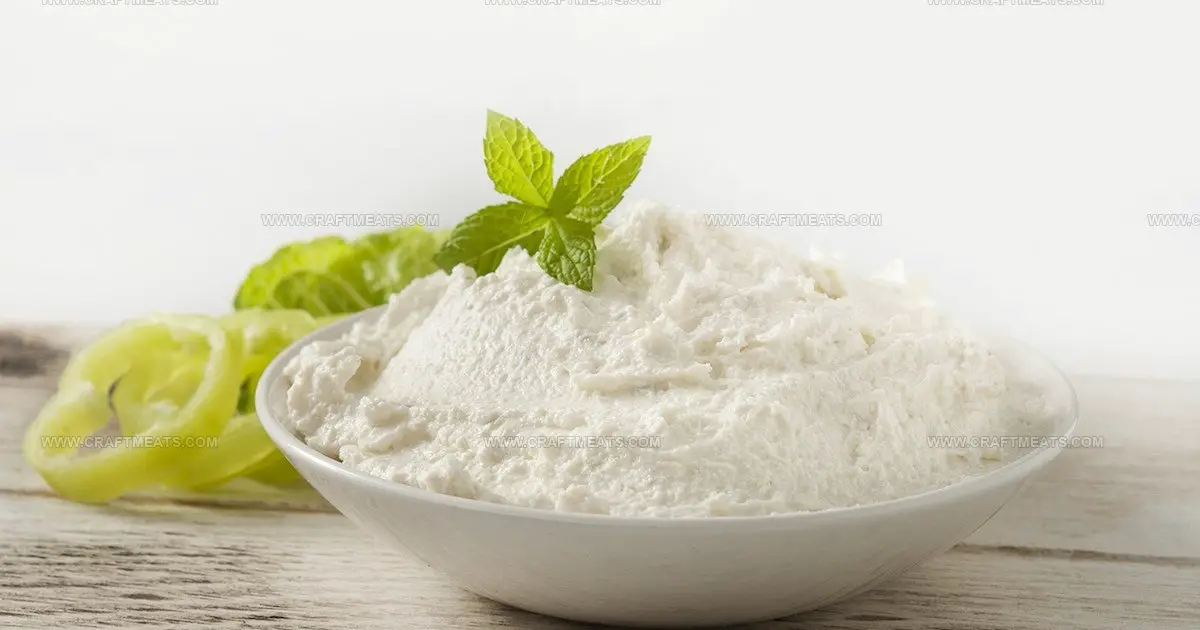
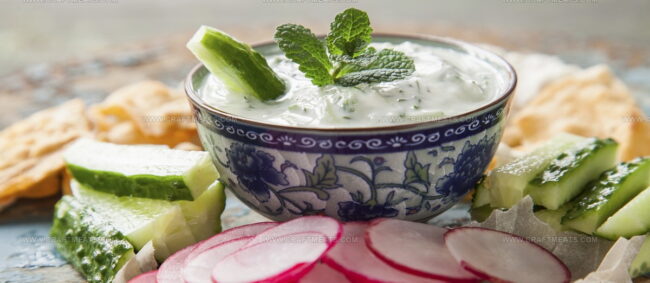



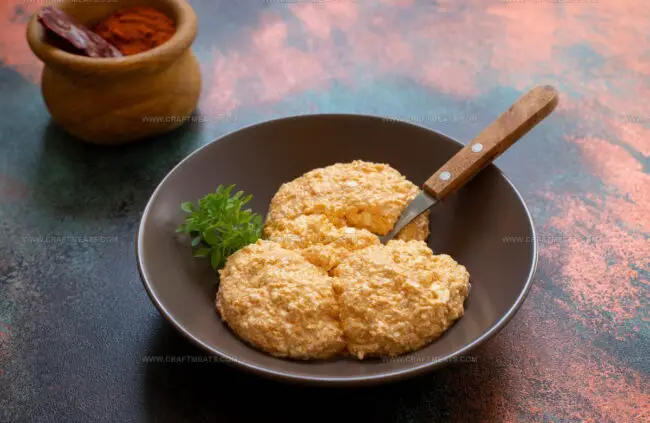
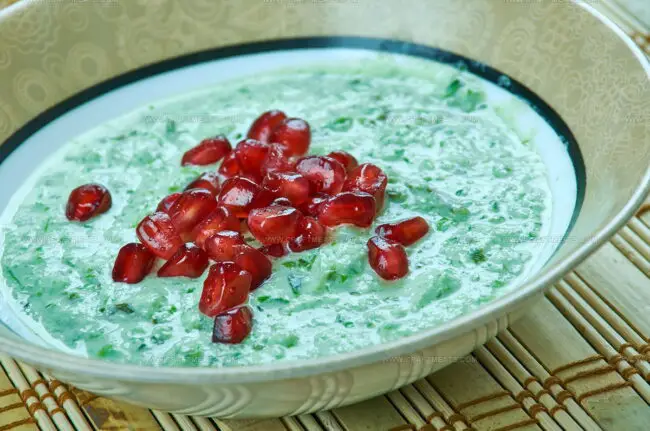
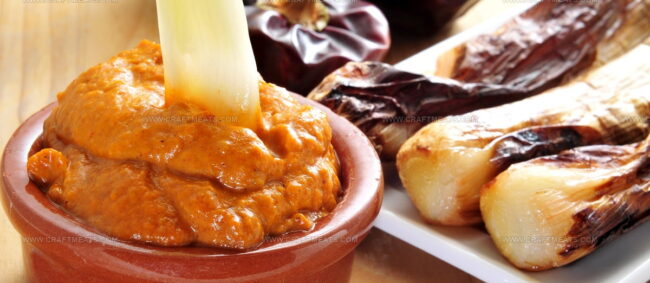

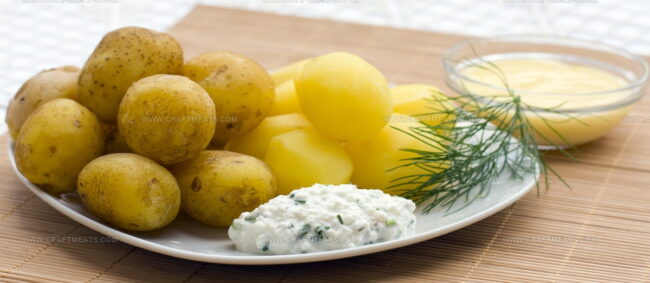
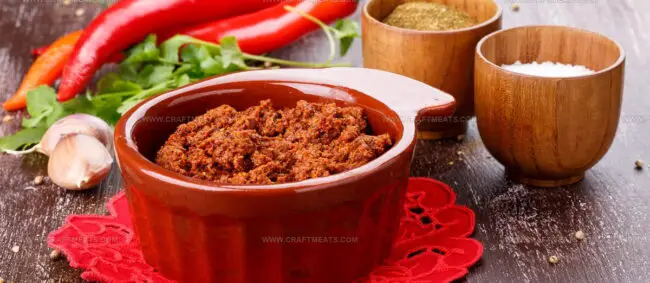
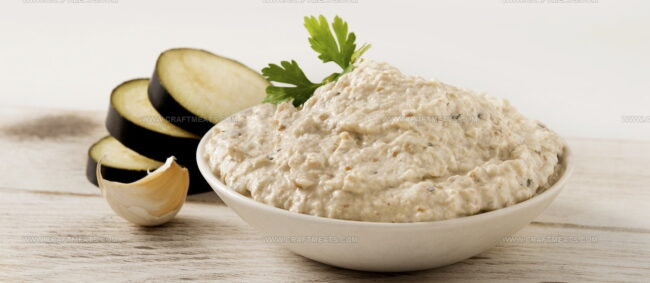
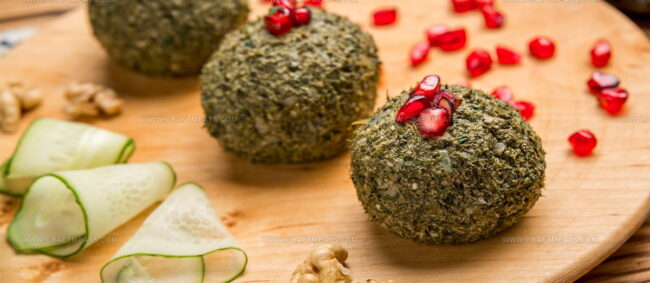
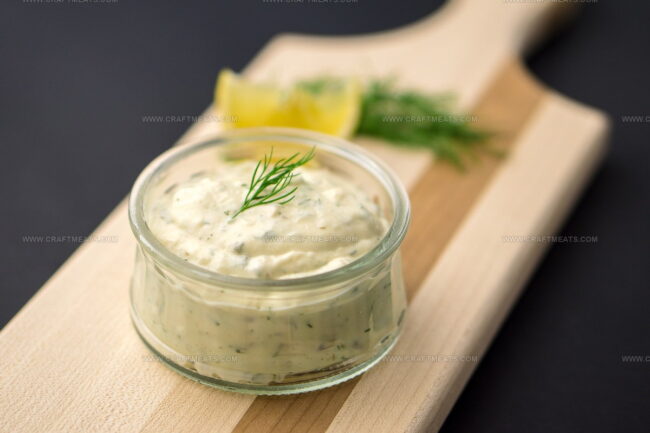

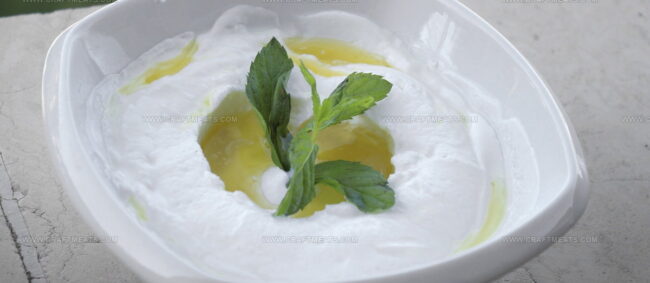


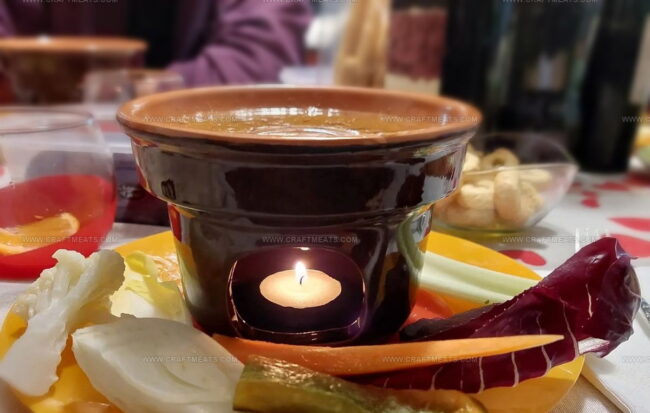
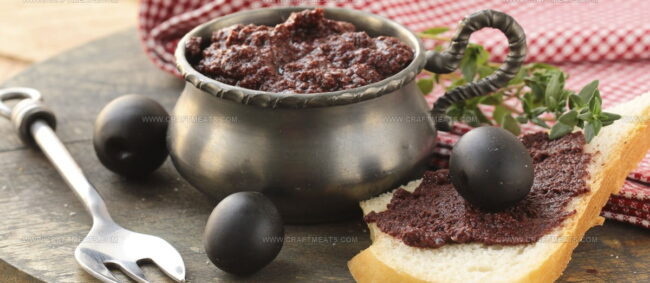
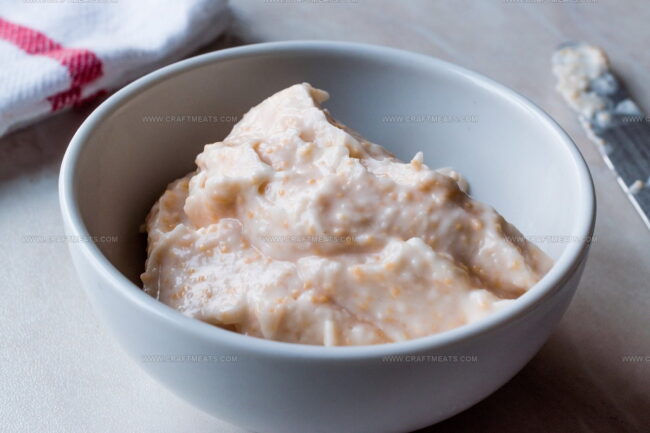
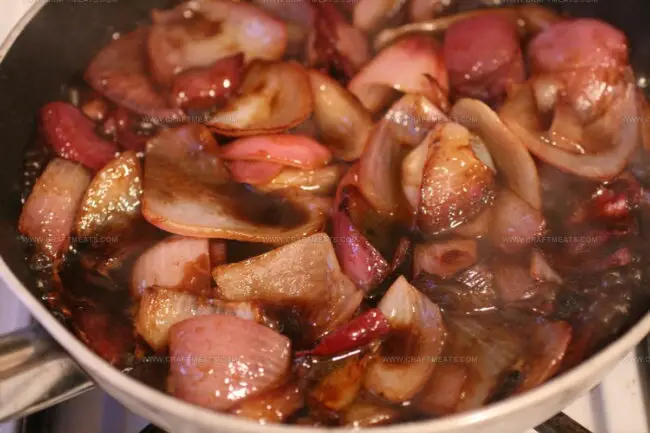
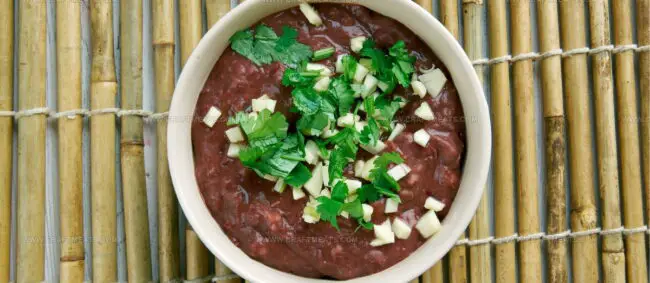
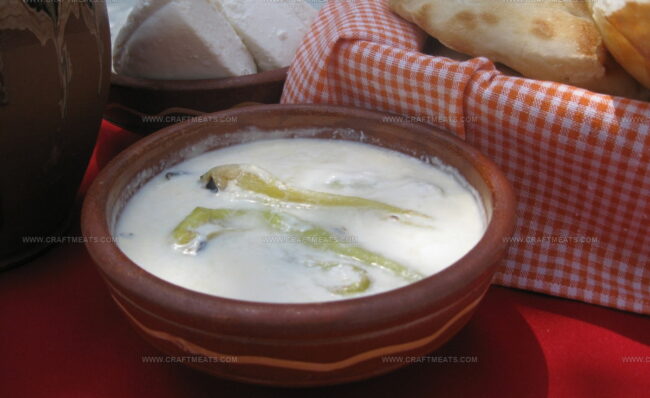
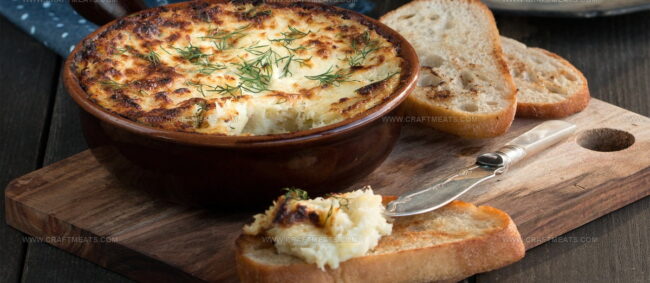
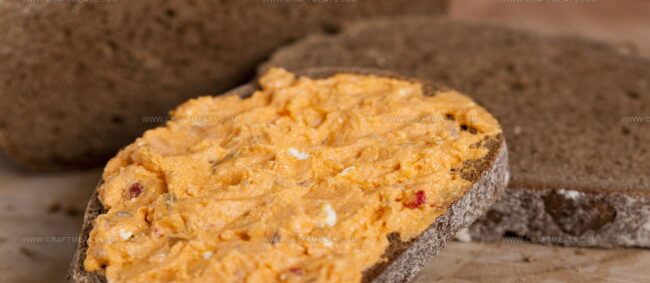
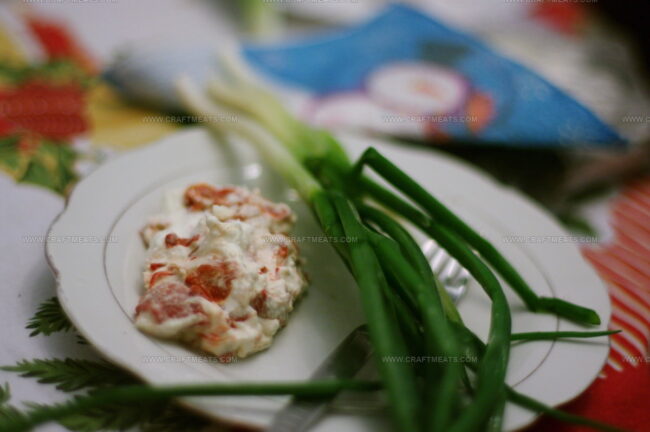
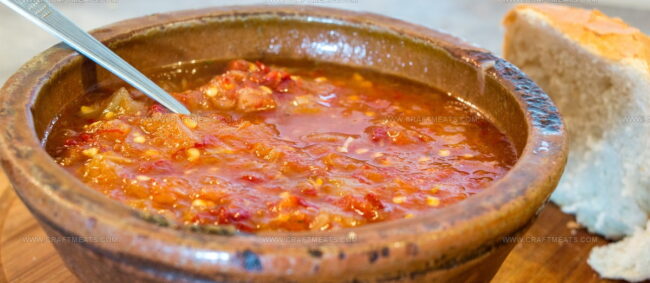
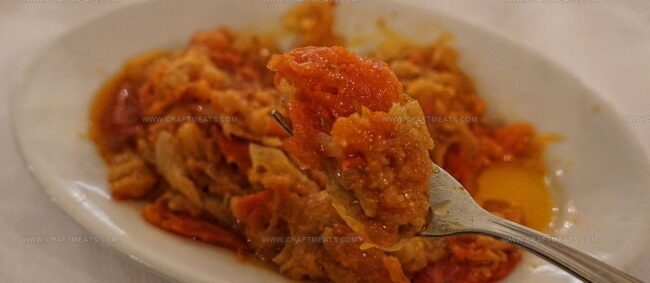
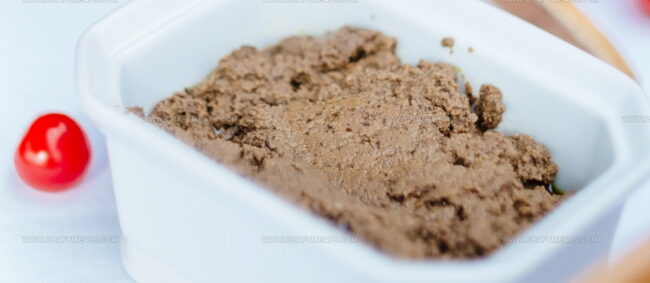
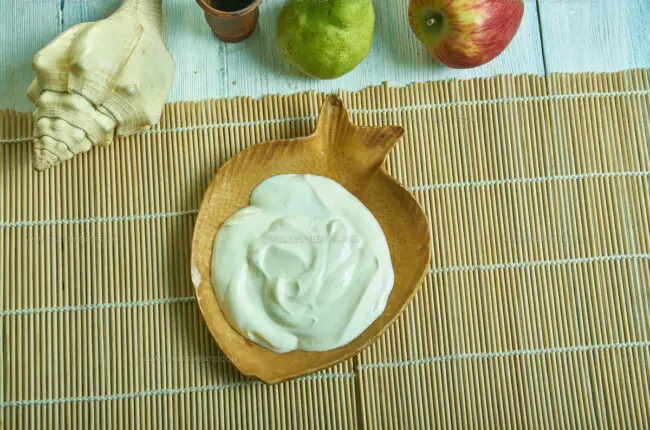
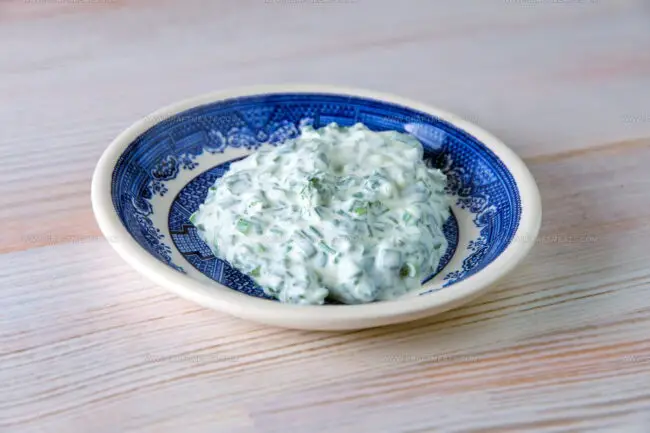
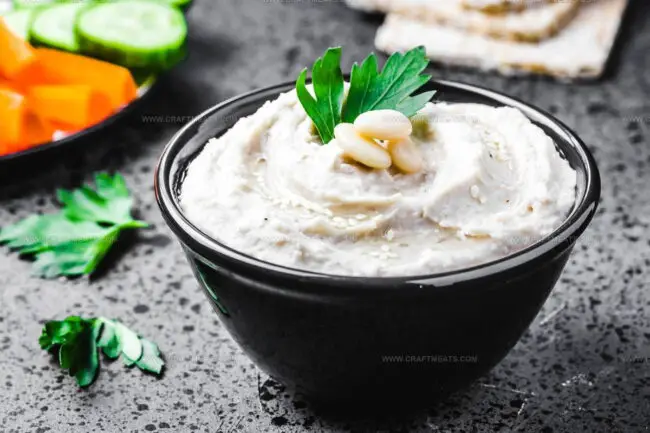
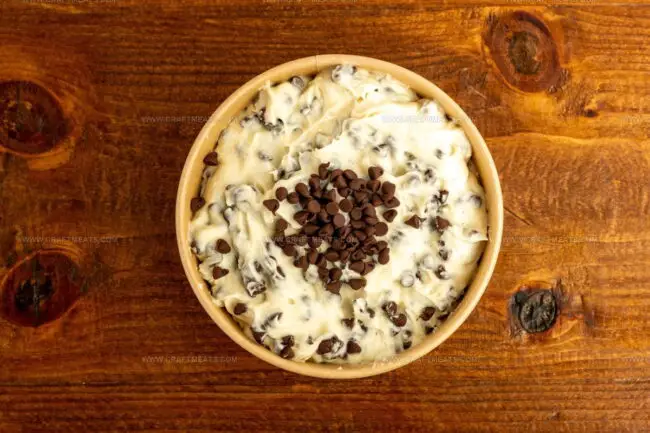
Isabella Rossi
Founder & Culinary Content Creator
Expertise
Recipe Development, Traditional Irish and European Cuisines, Food Styling and Photography, Culinary Education
Education
Dublin Institute of Technology (DIT) – School of Culinary Arts and Food Technology
Ballymaloe Cookery School
Liam is the voice behind many of Craft Meats’ most flavorful features. With roots in Dublin’s smoky barbecue scene and a culinary degree from the Dublin Institute of Technology, he brings time-tested cooking techniques to life.
His training at Ballymaloe Cookery School sharpened his farm-to-table approach, giving him a deep respect for every ingredient he writes about.
He’s not about overcomplicating the process, just helping you cook meat that’s worth talking about. When he’s not writing or grilling, he’s out foraging or nerding out on regional spice blends to add to his next recipe.